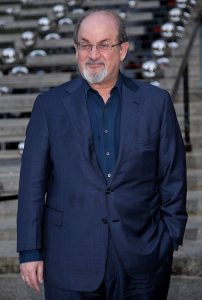
The very fact that he continued to write and publish and protest during the fatwa is a testament to not only his devotion to his craft but also to the importance of confronting censorship and championing the sanctity-that’s right, sanctity-of free, creative, critical and controversial expression.

He is a secular writer preoccupied with religious storytelling, enticed by the power of narratives to explain, to moralize, to control.īut most importantly there is Rushdie’s dedication to his art in the face of a global threat to his life. Because despite his avowed secularism, Rushdie’s particularly good at presenting fascinating (and often paradoxical) conundrums of belief. Like all of his best work, Two Years Eight Months and Twenty-Eight Nights is a hybrid novel of ideas and mythology and storytelling-let’s call it magical atheism. Rushdie’s latest book-his first adult novel since 2008’s The Enchantress of Florence-exercises all of his considerable strengths as a novelist and, most notably, as a thinker. (Though it should be noted that in this same year, 2010, Rushdie’s name appeared on an Al-Qaeda hit list, so the threat has never really dissipated.) His threat level remained at “level two, one step behind the queen.” Twenty years later this “heretic” read freely and openly-at a church no less. According to his memoir, Joseph Anton, the only promotion he was “allowed” to do for that book was an “unannounced” visit and book-signing at a Waterstone’s in London. When Haroun and the Sea of Stories was published in 1990, for instance, Rushdie was more than a year into his exile stemming from the fatwa placed on him for writing The Satanic Verses.

Rushdie himself must understand this extremely well. He gave the book a positive review, and was even invited to have dinner with the ever-reclusive Pynchon. Pynchon didn’t release another novel until Vineland in 1990, by which point Rushdie had become a major novelist, reviewing Vineland in the New York Times. At some point he brought up Thomas Pynchon and how Gravity’s Rainbow greatly influenced him when it was published in 1973. He was promoting Luka and the Fire of Life, the delightful sequel to his children’s novel Haroun and the Sea of Stories.

In the fall of 2010, I went to see Salman Rushdie speak at a church in Harvard Square.


 0 kommentar(er)
0 kommentar(er)
